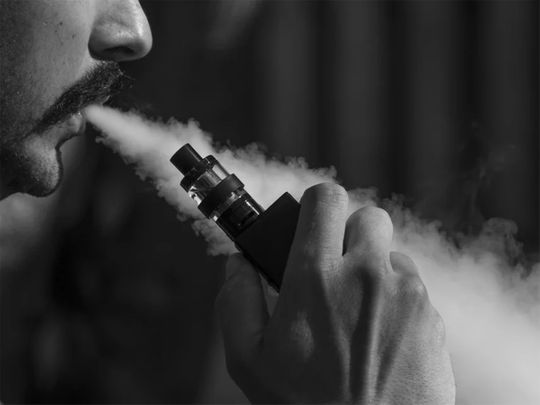
New York: MMost of the teenagers who vape are using addictive or mind-altering substances than previously believedost of the teenagers who vape are using addictive or mind-altering substances than previously believed, according to new study.
The data paints a different picture than previous research because of the significantly higher proportion (75 per cent) of teens who vape using nicotine, marijuana, or multiple substances and not just flavouring.
"We found that youth were more likely to report vaping nicotine and marijuana than 'just flavouring' only, and that cigarette smoking intensity was associated with an increasing proportion of students reporting vaping nicotine only," said study researcher Hongying Dai at University of Nebraska in the US.
The study, published in the American Journal of Preventive Medicine, examined patterns of youth vaping nicotine, marijuana, and just flavouring in the past 30 days by analysing data from the 2017 Monitoring the Future (MTF) cross-sectional study.
Of the 14,560 teens participating in that study, 12 per cent reported vaping within the prior 30 days, with 7.4 per cent using nicotine and 3.6 per cent, marijuana.
Of that group, only 24.9 per cent reported vaping just flavouring only, while a majority (75.1 per cent) reported vaping nicotine, marijuana, or multiple substances.
According to the researchers, current cigarette smoking intensity was associated with an increased risk of reporting vaping all three substances.
Compared with 8th graders, more 10th and 12th graders reported vaping nicotine, marijuana, and just flavouring during the study period.
Female students were also less likely to report vaping these three substances than male students.
Fewer non-Hispanic blacks reported vaping nicotine and just flavouring than non-Hispanic whites. Hispanics were also less likely to report vaping nicotine.
The prevalence of e-cigarette use among US youth increased dramatically during 2017-2019, partly due to the rising popularity of products with nicotine salt and pod-based products like JUUL, and a large number of flavours appealing to adolescents.
The nationwide increases in use led the US Surgeon General to issue an advisory about the epidemic in 2018, but much more needs to be done to reverse the upward trend.
According to the researchers, due to the recent spate of vaping-related lung injuries, calls for restrictions on flavoured vaping products and e-cigarette use have become more urgent.
"Continuous surveillance of youth behaviours and strategies and interventions to reduce youth e-cigarette use are needed. The truth is that no form of tobacco is safe," said study co-investigator Mohammad Siahpush.











